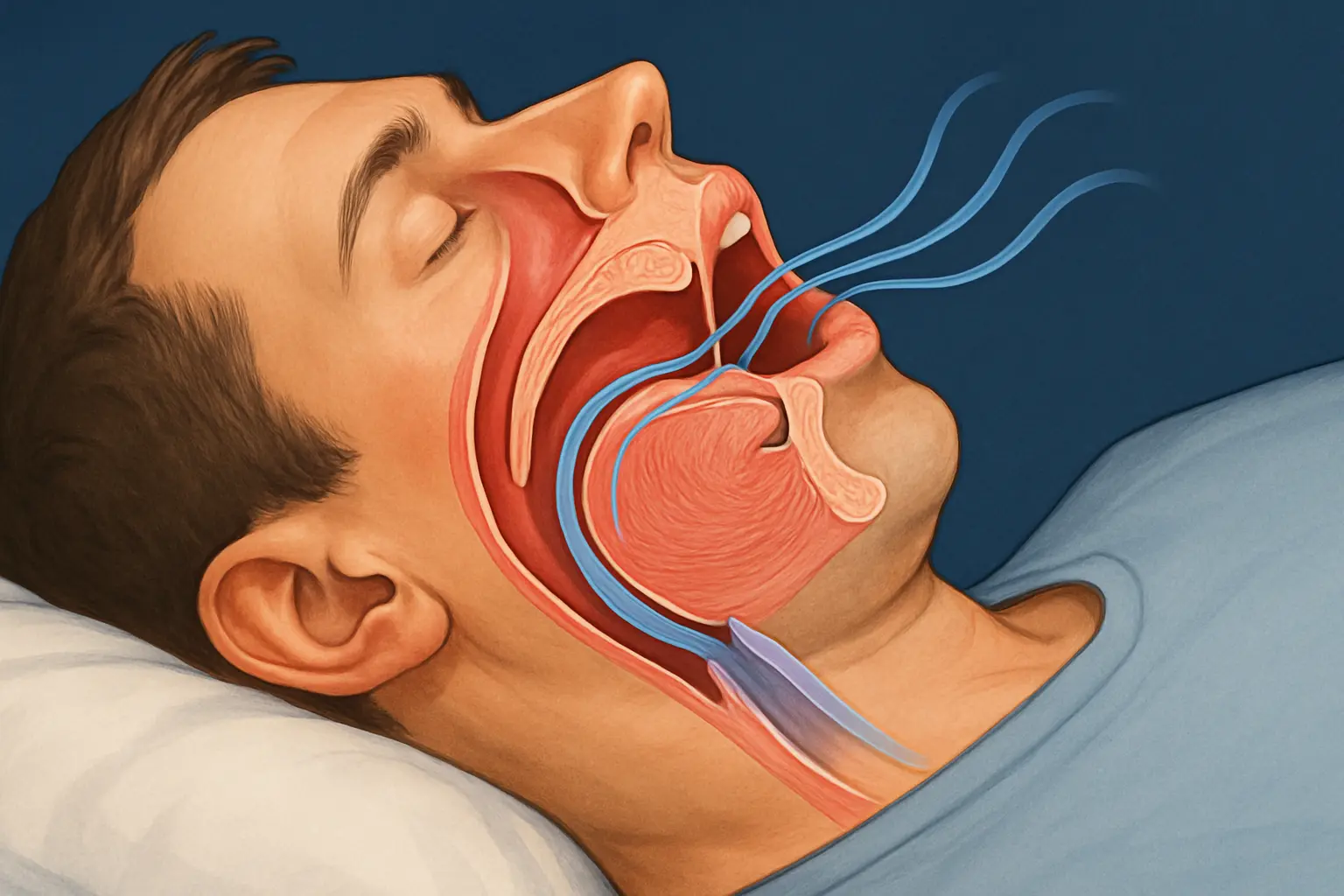Mouth Breathing in Sleep: Hidden Cause of Chronic Snoring
Mouth breathing during sleep is a common but often overlooked factor contributing to chronic snoring.
Unlike nasal breathing, mouth breathing can increase airway collapse, dry out tissues, and lead to more pronounced snoring patterns.
Why Mouth Breathing Matters
- Airway collapse: The jaw drops and soft palate relaxes, narrowing the airway
- Dry mouth and throat: Leads to irritation and louder snoring
- Oxygen variation: Irregular breathing reduces oxygen efficiency, causing micro-arousals
SnailSleep analysis shows that users who breathe through their mouth at night have 35% higher snoring scores compared to nasal breathers.
Data Snapshot: Breathing Patterns vs. Snoring Intensity
| Breathing Pattern | Avg. Snore Score (0-100) | Nighttime Oxygen Saturation (%) | % with Observed Apnea |
|---|---|---|---|
| Nasal | 48 | 95 | 12% |
| Mouth | 65 | 92 | 28% |
| Mixed | 57 | 93 | 20% |
Mouth breathing correlates strongly with more severe oxygen dips and higher snoring intensity.
Mechanisms Behind Increased Snoring
- Reduced tongue and soft palate tone → airway obstruction
- Dryness of oral cavity → vibration and irritation
- Fragmented sleep → daytime fatigue and reduced restorative function
- Potential link to OSA → mouth breathing is common in patients with mild to moderate sleep apnea
Strategies to Reduce Mouth Breathing
- Nasal patency improvement
- Use saline sprays, nasal strips, or consult ENT specialists for chronic congestion
- Chin straps or mouth closure devices
- Encourage nasal breathing during sleep
- Positional therapy
- Side sleeping can reduce airway collapse and mouth opening
- Myofunctional therapy
- Exercises to strengthen oral and airway muscles
- AI tracking
- SnailSleep monitors breathing patterns, oxygen saturation, and snoring to provide actionable insights
Real-Life Case: James' Airway Adjustment
James, 44, had chronic snoring and occasional morning headaches.
SnailSleep identified predominant mouth breathing at night, with oxygen dips averaging 90–92%.
After positional therapy, nasal exercises, and a mouth-closure device, his snoring score dropped from 72 to 45, and he reported improved morning alertness.
Related Articles
- Mouth Breathing in Children: Risks for Sleep and Development
- Revolutionary Mouth Tape: The 2025 Game-Changer for Natural Snoring Solutions
- The Science of Sleep Apnea: Understanding the Mechanics of Breathing During Sleep

